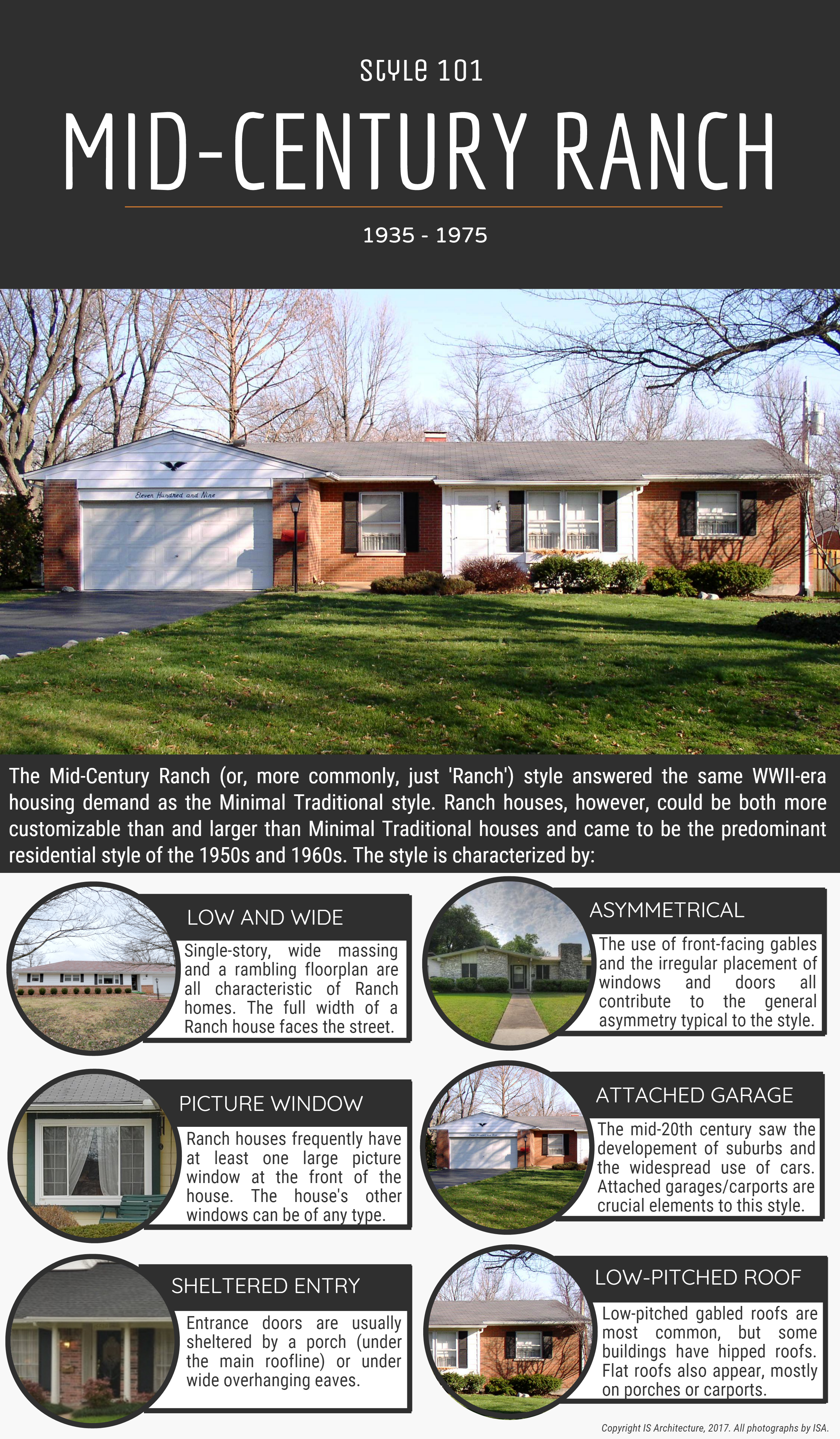Style 101: Mid-century Ranch
The Ranch style originated in southern California in the mid-1930s. In the 1940s, the Ranch was one of the small house types financed by the Federal Housing Administration (FHA), along with Minimal Traditional and other small house styles. The Ranch house began to pick up popularity as the financial controls that encouraged small house building lifted following WWII; by the 1950s it was the most predominant residential style in the country.
This popularity is the result of a number of factors. Firstly, the growing automobile culture of the 1950s allowed for the development of suburbs that required new, cheap, and fast construction and where larger lots could accommodate a larger, family-sized houses. The Ranch house’s long and low form, expandable ‘rambling’ floor plan, simple detailing, and modern materials made it an excellent answer for these needs. Secondly, the style served as a bridge between the traditional styles of the past and the drastically different modern styles that began to become popular during this period, such as the International and Contemporary styles. The Ranch style allowed for modern construction methods, aesthetics, and a more open floor plan — as well as modern living features like open kitchens and attached garages — without requiring homeowners to commit to a dramatic roofline or glass walls. Furthermore, the simplicity of the Ranch allowed for the application of more traditional, styled elements such as columns or moldings. In fact, the ability to design from scratch, which was afforded both by the availability of empty suburban lots and the adaptability of the style itself, created a sub-category of Custom Ranch houses. These were designed individually and often by architects, rather than in planned subdivisions designed and built by developers.
Ranch houses still exist in the hundreds of thousands today throughout the country. Historic significance can still be present on the individual level if the Ranch has been essentially unaltered, but the general perception of the style as non-historic has led to rampant ‘modernization’ of Ranch houses throughout the country. On a larger level, the style is particularly eligible for significance in the context of historic districts, since original subdivisions still survive with sufficient integrity to convey the importance of city planning and suburban development in post-war America.
There are only 49 Ranch houses designated in San Diego. Could yours be next? Check out our handy infographic below to see if your house features the defining characteristics of the Ranch style!


